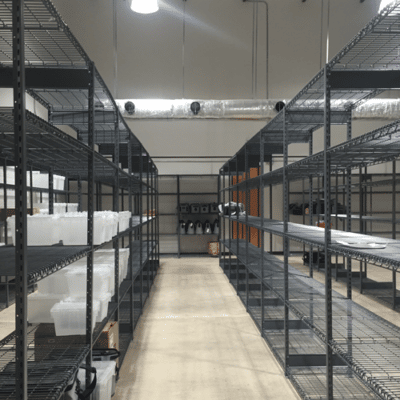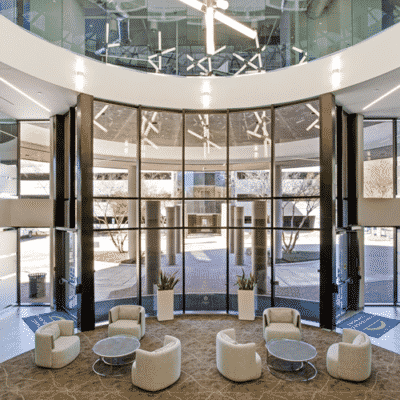Hope Alliance Saves Lives
Hope Alliance’s mission is “to assist those whose lives have been affected by family violence and/or sexual assault by providing safety, services, and developing partnerships that lead to hope, healing, and prevention.”
Annually, Hope Alliance receives an average of 3,500 contacts to its 24/7 hotline service and crisis chat called Hopeline. Of the 3,500 contacts received, Hope Alliance serves, on average, 1,000 of the callers/survivors on a personal basis. On average, of the 1,000 survivors served annually, approximately 350 receive emergency shelter services.
Hope Alliance has a unique blend of 17 different core services including:
- Hotline and crisis chat (Hopeline)
- Temporary emergency lodging with food, clothing, toiletries, and transportation for those in the most dangerous situations
- Counseling, both individual and group
- Play therapy for children
- Legal advocacy
- Hospital accompaniments
- Court accompaniments
- Case management, crisis intervention, and more
Active participation in Hope Alliance’s services helps clients break the cycles of violence in which they live. Hope Alliance’s services save lives.
In the Beginning: Hope Alliance’s History
Hope Alliance was started in April 1984 as a rape crisis counseling center serving Williamson County. In 1990, they added a 24-bed emergency shelter to its operation by converting two residential homes into one facility. By 2012, demand for crisis services in Williamson County, TX placed Hope Alliance at maximum operational capacity at both the shelter and the counseling center. In 2017, the Board of Directors decided to restructure the agency to prepare for expansion in order to serve the county’s unmet needs. The first step in restructuring was to remodel the existing Shelter to increase the number of beds from 24 to 30.
Unmet Needs: Reaching the 70% of Victims on Waitlists
Hope Alliance currently has limited resources with only 30 shelter beds and eight counselors. Because of this, they were only able to provide services for 30% of those who cried out for help in 2021, leaving 70% of callers placed on waitlists or referred to other agencies outside of Williamson County, TX. For every person Hope Alliance served in 2021 (1,086), they referred at least one other person in need to a different agency outside of Williamson County.
Additionally, as the population in Williamson County booms, the number of hotline calls Hope Alliance receives increases every year. Crisis chat requests started at an average of 40 per month on top of the 250 hotline calls already received per month. At its height, the client waitlist grew from an average of two to three dozen people to over 180 people. At its height, client wait times grew from an average of two to three weeks to five to six months.
Building Hope and Healing
In 2019, after hiring Dr. Rick Brown as its new CEO the previous year, Hope Alliance began a search for a larger facility.
In 2018, the Board of Directors reached out to the Georgetown Health Foundation for a Capacity Building Grant, which was awarded. In 2019, Dr. Brown reached out to the St. David’s Foundation for a grant to fund consulting services from a land acquisition expert because Hope Alliance was landlocked in Round Rock, TX. St. David’s Foundation awarded the grant request and suggested that Dr. Brown reach out to Dustin Hogzett at AQUILA. They knew that Dustin had worked with Any Baby Can and had helped that organization receive a grant to go toward their new HQ project.
Dr. Brown contacted Dustin Hogzett and Todd Tebbe at AQUILA in 2019 and told them his plans for Hope Alliance. He explained that he wanted to expand their shelter and mission, increase the number of beds in their shelter, and more. Hope Alliance conducted research on how many beds they would need in order to meet the growing demand in conjunction with population growth over the next 10 years in Williamson County. It was determined that they would need to increase their beds from 30 to 100.
But this was just a small piece of Hope Alliance’s plan. Their vision was to do something even greater for the community – build a multi-agency center.
Hope Alliance’s Multi-Agency Center
Hope Alliance’s ultimate goal is to build a Hope Center, a multi-agency center that will combine shelter and counseling services under one roof.
A multi-agency center is a location where public and private agencies come together to provide services to victims of crimes in order to reduce the number of times victims must tell their stories, reduce the number of places victims must go for help, and increase access to services and support for victims and their children.
According to Survivor Defined Success, Hope and Well-Being: An Assessment of the Impact of Family Justice Centers, survivors receiving services from a multi-agency center reported a significant decrease in negative emotional experiences. Survivors receiving services from a multi-agency center also reported statistically significant increases in:
- Satisfaction with life
- Positive emotional experience
- Affect balance
- Capacity to flourish
Hope Alliance and AQUILA began working together to design a facility to hold up to 96 beds, 50% more staff, and space for supporting agencies. These additional agencies will help Hope Alliance reach its ultimate goal of becoming a multi-agency center.
The supporting agencies (co-locators) included to date are:
- AFSSA (Asian Family Support Services of Austin)
- County Attorney
- District Attorney
- Law Enforcement (PDs from all over Williamson County)
- Goodwill of Central, TX
Other agencies are to be contacted.
Hope Alliance’s multi-agency center will be the first of its type in Central Texas and only the fourth of its type in the entire state of Texas. Hope Center will include up to 96 beds in 24 semi-private bedrooms, each with its own bathroom. These 96 beds will enable Hope Alliance to meet 100% of the demand in Williamson County for the next 10 years. Research also suggests the existence of such a facility will aid in increased prosecutions which will, in turn, reduce future violence in Williamson County.
In addition to providing offices for supporting agencies and additional bedrooms, the new building will include more service space:
- Community training facility
- 8 counseling rooms
- 4 play therapy rooms
- A commercial-style kitchen and dining hall
- Donation receiving and storage area
- Laundry facility
Hope Alliance’s Search for a Home
More than a dozen years ago, an anonymous donor gave two acres of land to the Greater Round Rock Community Foundation. The land was adjacent to the railroad near downtown Round Rock and the land was designated for Hope Alliance to use for expansion purposes. Hope Alliance originally thought this could be the location for its new facility but consulted with AQUILA’s team to make sure it was the right fit.
AQUILA ran due diligence on the site and determined that developing the new facility on this land was not feasible. During the due diligence process, AQUILA determined through a programming exercise that Hope Alliance needed a minimum of five acres. The Round Rock land wasn’t large enough and the site was not secure because the rail line made the area hard to protect.
When informed of Hope Alliance’s decision to “walk away” from the land designated for their use, the Greater Round Rock Community Foundation, decided to sell the land and donate sale proceeds to Hope Alliance for their future facility. Hope Alliance began looking at other properties with existing buildings or raw land in the area that would fit their needs.
After Hope Alliance narrowed down a shortlist of sites, AQUILA conducted due diligence on the properties and determined that none of the sites were going to work. The information was put together in a report and presented to the Hope Alliance Board of Directors who agreed with the findings.
Williamson County Land
Next, AQUILA suggested reaching out to Williamson County for land and/or money. Dustin knew that the County had recently given land and money to an animal shelter and he thought they may have additional land they could donate to Hope Alliance.
Hope Alliance needed a minimum of five acres to build their new facility so they decided to see if the County had five-to-ten-acre land to donate. We identified a piece of land the County owned in Georgetown that fit our needs. It was the right size and fit the safety needs as it was near a Child Advocacy Center and the animal shelter. It was perfect for the Hope Center.
Our teams were told the best way to get the conversations started was by speaking to the five County Commissioners. We spent six months meeting with all five of them and received a large amount of support.
Unfortunately, the county informed us the animal shelter land donation was a one-time thing and since Hope Alliance wasn’t technically a county entity, if they gave Hope Alliance land, it would open the doors to any non-profit wanting land. This killed some of the steam on the project but everyone was still motivated.
Time to Act
Hope Alliance and AQUILA pivoted and decided the best approach would be to find land exactly where Hope Alliance wanted to be and purchase it. This would provide them the opportunity to be in the ideal location at the center of the community they serve as well as have access to everything they need and want close to their facility.
After doing an extensive property search for land that fit their needs, Hope Alliance’s broker found an 11.5-acre site in Leander, TX off of St. Gabriel Parkway that was close to St. David’s Hospital. The land site was in the heart of Williamson County’s growth spurt and was a great spot to safely serve Hope Alliance’s clients and also allow for future expansion.
The landowner was extremely supportive of Hope Alliance’s mission and what they were doing to support the community and because of this gave them an excellent price for the land. Even though 11.5 acres is more land than needed, they planned to build on the land and sell what they didn’t need, in order to place additional funds back into the development.
A contract to purchase the 11.5 acres of land in Leander, TX was submitted and accepted by the owner, pending due diligence activities including Leander City Council’s acceptance of a minor PUD zoning amendment required by the City’s attorney and the City’s planning department.
Hope Alliance’s Board of Directors knew they had to raise a significant amount of money for the land and development but after too many years of waiting for this moment, they knew it was time to act.
The Path Forward
After Hope Alliance decided they were all in on this project, they were determined to make it the best it could be.
AQUILA advised that the best path forward was to partner with the best consultants, contractors, and designers to get this project done the right way. We assembled a project team consisting of Sixthriver Architects, S. Watts Group, Vickrey & Associates, and more talented firms.
Everything was going well and our next step was to seek a zoning change through the City of Leander Planning Department. This would require several rounds of review and approvals from the City Council.
The Vote
In order to get a zoning change for the land, our teams had to go in front of the City Council to plead our case and secure votes.
During the City Council meeting, there was a public reading where members of the community were allowed to voice their concerns.
Because the site was close to a neighborhood, members of a Homeowners Association fought vigorously against Hope Alliance. Some members of the group even tried to convince the council that Hope Alliance was housing criminals. This public aggression continued on for several months and our final reading and vote were delayed because of a City Council and Mayoral election.
Ultimately, it came down to a vote by Leander City Council. If the vote for the zoning change didn’t pass, Hope Alliance’s multi-agency center was likely never going to come to fruition. When the final votes were cast, the zoning change passed by a 6 to 1 favorable vote.
One Step Closer
After the Minor PUD was approved by City Council, the project team started putting together preliminary designs. This allowed us to determine how much of the land we needed to utilize versus what unused land could be sold.
Over the next several months, AQUILA commercial and the design team have established the preliminary budget and schedule as well as produced the conceptual site plan which has been approved by the City of Leander Planning Department.
The design team is currently working to finalize site civil plans and applications with a goal to submit them by mid-summer 2022. Exterior and interior building design is also moving forward with the anticipated completion of drawings and submission for building permits by the end of the year.
The current schedule has construction slated to begin in Q1 of 2023 with an anticipated completion date of Q1 2024.
If you or someone you know has experienced violence, you know how difficult it can be to get help. This center will reduce the number of times victims must tell their stories, reduce the number of places victims must go for help, and increase access to services and support for victims and their children.
Hope Alliance’s multi-agency center will be much more than just a building, it will be a beacon of hope for victims of violence in Central Texas. This center started as an ambitious dream and we are one step closer to making it a reality.
Be sure to check back here for part two of this ongoing journey coming soon.









